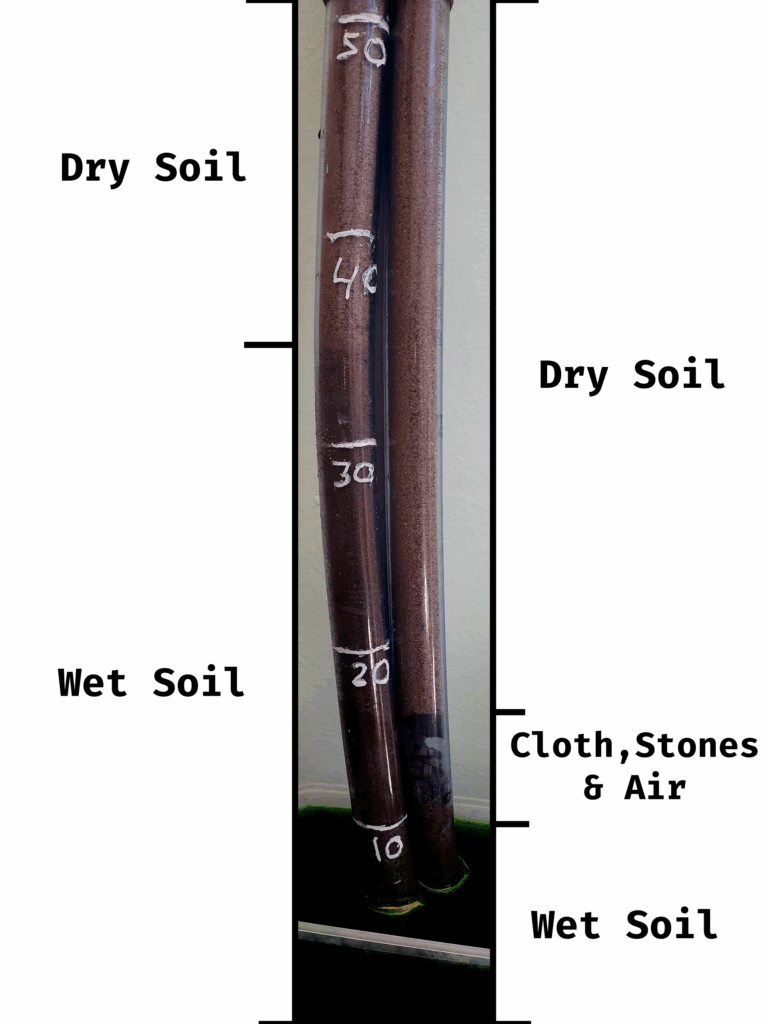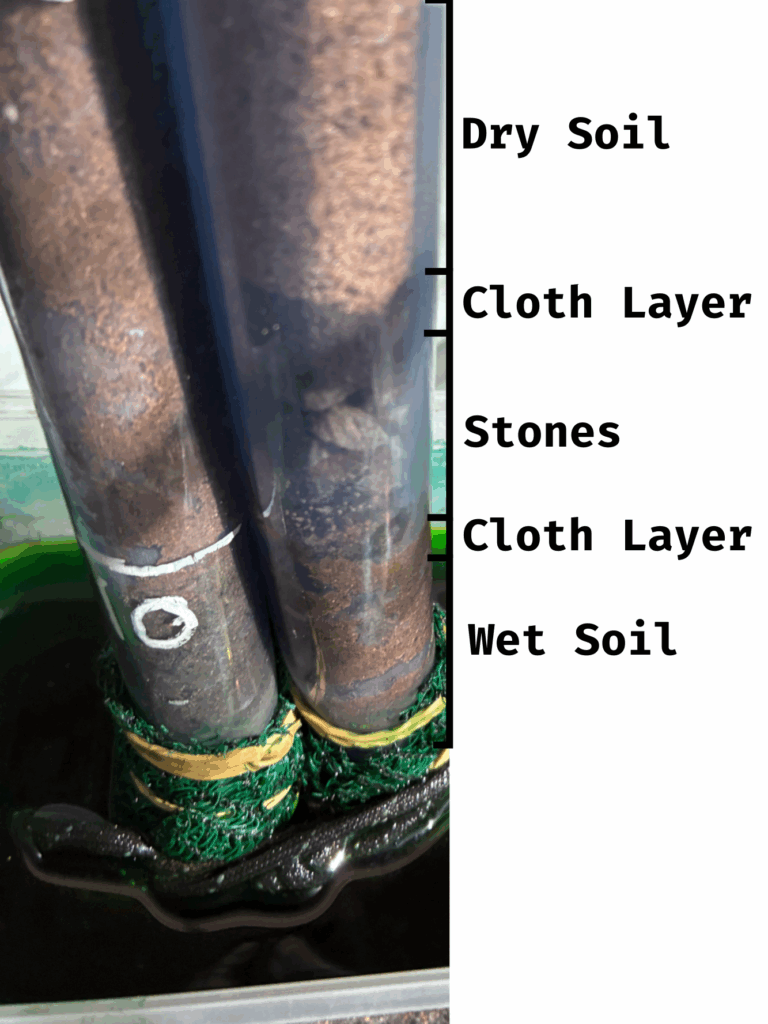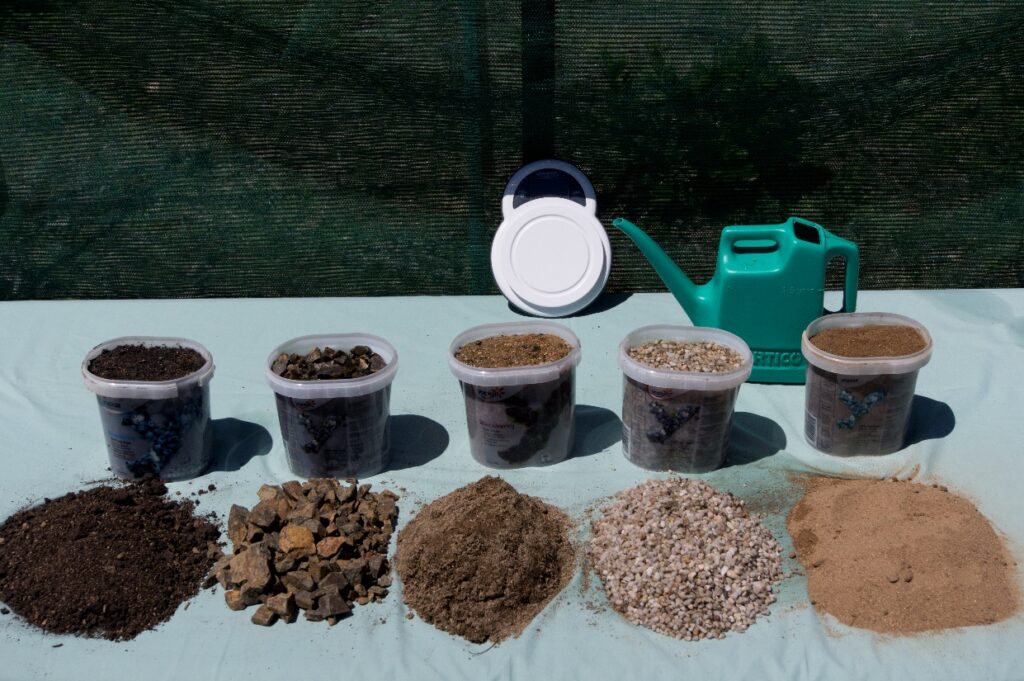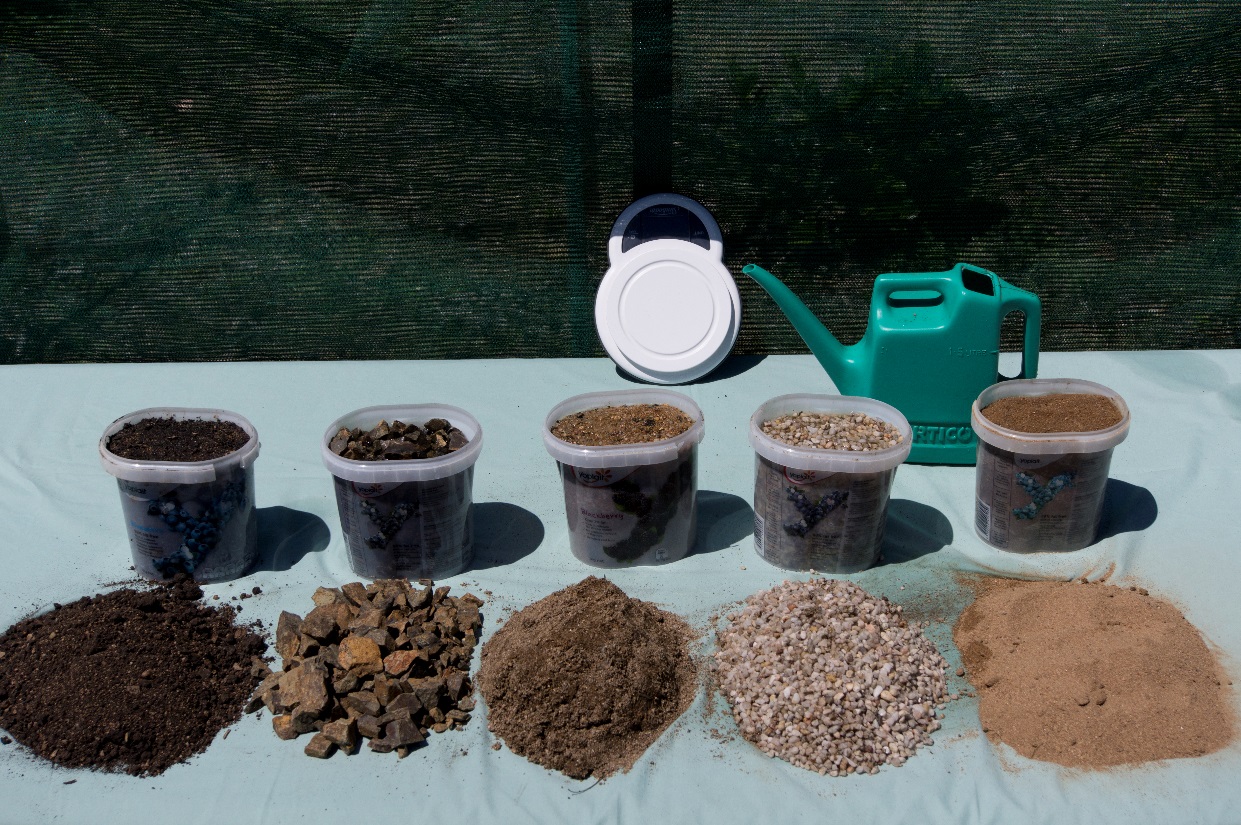When making wicking beds and boxes, a widely promoted mistake that is based on two common misconceptions, is to put stones next to the reservoir and a sheet of cloth over both. In addition to costing money, there are hidden costs that are far more important. Rocks waste space where the soil biology should be, the cloth stops the wicking process, and soil holds more water and does not wash into the pipe. Here is why.
Healthy Soil-Biology is Essential for Healthy Plants
Soil-Biology refers to the viruses, bacteria, archaea, fungi, algae, slime moulds, protozoa, and nematodes which feed the plants and create many compounds the plants require for healthy growth.
Stones lack the large surface area needed by the soil-biology
The Soil-Biology needs surfaces to attach themselves to and countless hidey-holes for protection. Stones are solid without hidey-holes and provide a very limited surface area. A spoonful of clay when spread out has far greater surface —equivalent to the size of a tennis court. Because of this, using stones in a wicking bed is a waste of space that should instead be occupied by nutrient-rich soil, home to a vibrant soil biology.
Cloth Will Create Airlocks and Stop Wicking
Some people add cloth to cover the reservoir and stones to prevent soil from washing into the reservoir pipe. This is not an issue in properly made wicking beds, where the holes on the reservoir pipes point downwards.
The fine roots can penetrate the cloth and larger roots grow around it to reach the water. As the water level drops, this space is filled with air as it moves in to replace the water. Air does not wick water, and this creates an airlock between the cloth and the water.
The bed above the cloth ends up like a reduced regular garden bed. It has a permanent water supply at the bottom, rather than wicking soil, and the space below the cloth has no soil biology.
As the water becomes permanent, it can become a haven for mosquito larvae. In a wicking bed the reservoir pipe is surrounded by soil and there is no permanent water as it gets used within days.
In the photos below, we show a simple demonstration of the wicking effect on the left and the lack of it on the right.


The pipe with only soil (left) was able to wick water up 35cm in 24 hours (and further) but the pipe with stones and cloth (right) failed to wick. In the photo above, it is clear how the air gap caused by using cloth and stones prevents wicking.
Soil Holds More Water than Sand or Stones

A good soil mix retains more water than the same volume of stones, coarse sand, pebbles, or fine sand. To demonstrate this, one-litre samples of soil, stones, and sand were dried in the hot sun, weighed, soaked, and then measured again to determine how much water they held.
Since a gram of water is equal to one millilitre, the difference tells us how much water there is in each litre of soil. In the tables below, ‘Inert material’ refers to rocks, stones, sand, loam, and clay.
As the soils in our beds vary a lot, we first took one litre of soil from three beds, filled each container with water, drained the free water out and weighed it wet. We then spread the soil out on a table, let it dry in the sun and weighed it again in the container.
Average Soil Mix
| Beds | Wet Weight (g) | Dry Weight (g) | Volume of Water (ml) | Volume of Inert Material (ml) |
|---|---|---|---|---|
| 1 | 1728 | 1197 | 531 | 469 |
| 2 | 1685 | 1118 | 567 | 433 |
| 3 | 1581 | 942 | 639 | 361 |
| Average | 1664 | 1085 | 579 | 421 |
We used the average of those three samples from the table above in the table below. We then filled four containers, with respectively stones, coarse sand, pebbles and fine sand. As with the soils, we filled them with water, drained that, spread the content out to dry in the hot sun, put it back into their containers and weighed those again.
Comparison of the Five Materials
| Material | Wet Weight (g) | Dry Weight (g) | Volume of Water (ml) | Volume of Inert Material (ml) |
|---|---|---|---|---|
| Average Soil Mix | 1664 | 1085 | 579 | 421 |
| Stones | 2066 | 1588 | 498 | 502 |
| Pebbles (2-3 ml) | 2043 | 1642 | 401 | 599 |
| Coarse Sand | 2130 | 1743 | 387 | 613 |
| Fine Sand | 1819 | 1471 | 348 | 65 |
Conclusion
Our soil mix held more water than stones, which held more than pebbles or sand. Much of that water is normally held in the bodies of the soil biology. For suggestions to improve your soils and stimulate your soil biology to grow, see our guide to create and improve your own soil.


